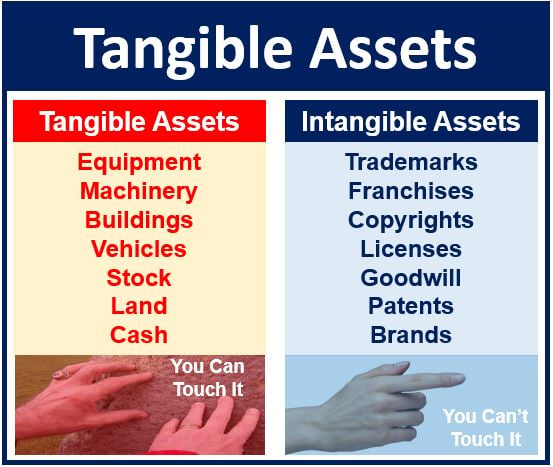Tangible assets include both fixed assets such as land, machinery, equipment, vehicles, buildings, and current assets. Inventory, cash, and stocks for example, are current assets.
These assets contrast with intangible assets, which have no physical form (brands, copyrights, patents, goodwill, etc.)
Tangible items have a material or physical form, i.e., anything that we can touch.
When we expect these assets to have a lifespan of more than 12 months, we apply depreciation to them. We use a depreciation process rather than allocating the whole expense to one year. An expense is a specific cost during an accounting period.

Tangible assets are depreciated
In a company’s balance sheet, we usually list tangible assets under PP&E. PP&E stands for property, plant, and equipment.
Movable items that have no permanent connection to a building are also tangible assets. We call these assets FF&E. FF&E stands for furniture, fixtures, and equipment. For example, tables, chairs, computers, water coolers, and photocopiers are FF&E items.
In accountancy, these type of assets depreciate or (less frequently) deplete. On the other hand, we amortize intangible assets.
Tangible assets such as books, toys, wine, gold, stamps, and furniture have become asset class in their own right. Many rich people will aim to include these assets as part of their asset portfolio.
This has fuelled the rapid growth in the number of tangible asset managers over the past couple of decades.
According to Moneyterms.co.uk:
“Assets that have a physical existence, or give the holders definite set of financial rights are classified as tangible assets, as opposed to intangible assets such as patents and goodwill. Examples of tangible assets include land, machinery, bank deposits, and investments.”
Fire, accidents, and natural disasters can destroy these types of assets, unlike intangible assets.
However, we can use them as collateral to raise loans. We can also convert them into cash in an emergency.
